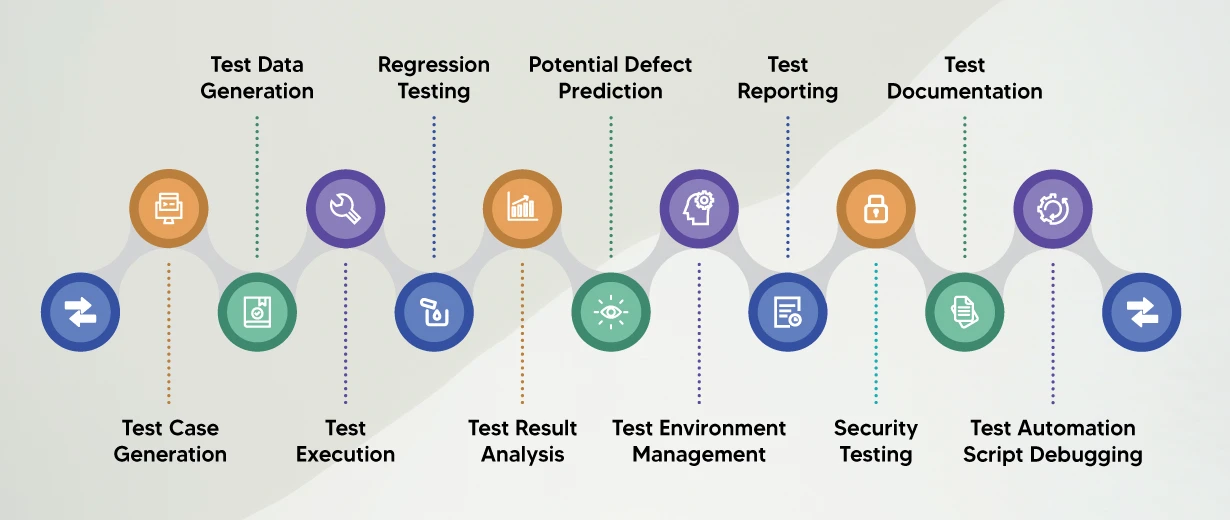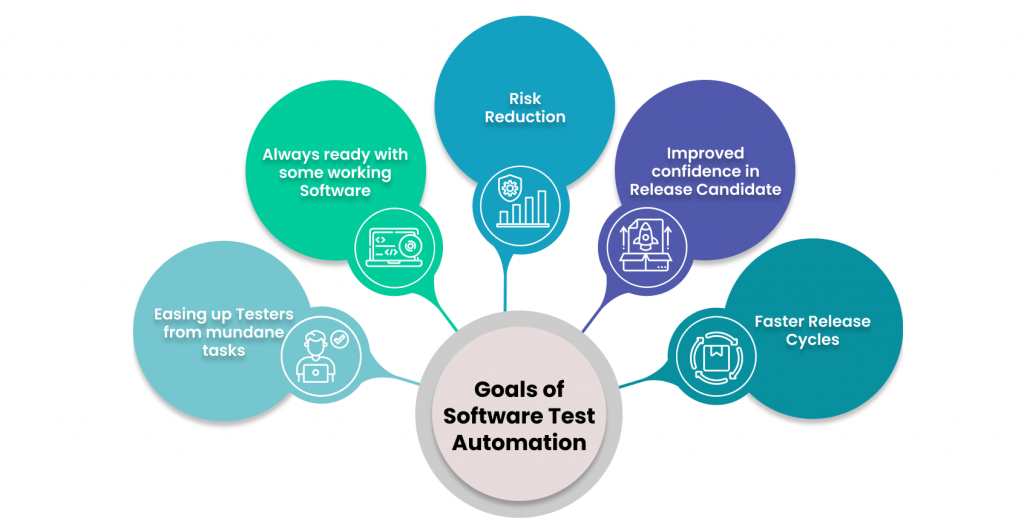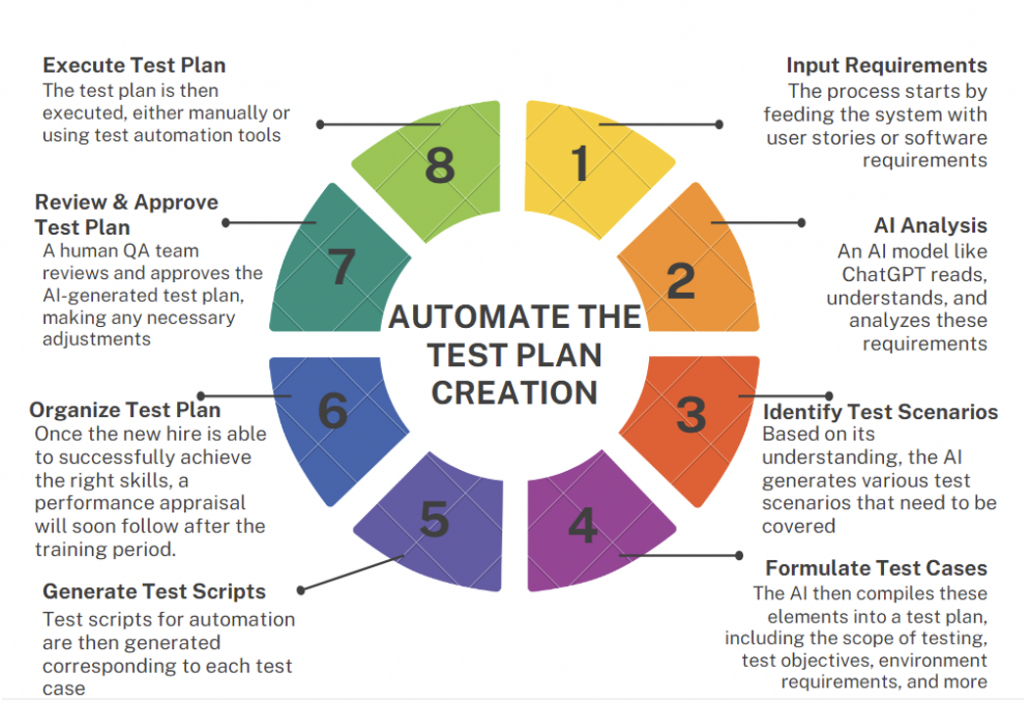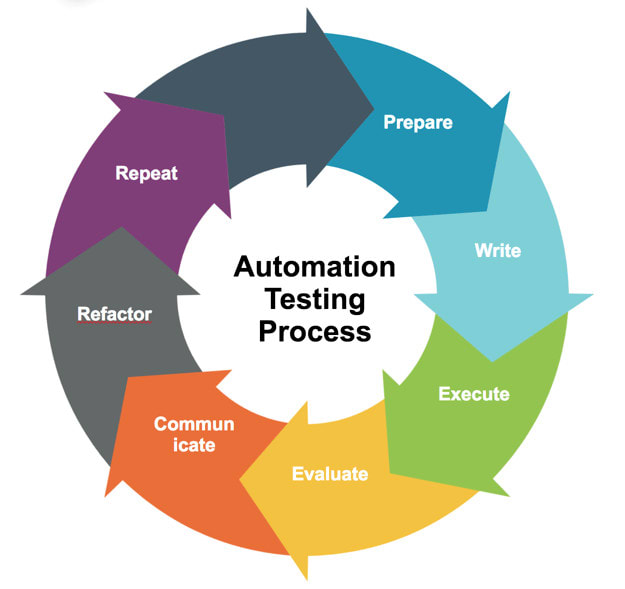
Generative AI for Testing and Quality Assurance: Revolutionizing Software Development
In the fast-paced world of software development, ensuring the quality and reliability of new applications and systems is paramount.
Traditionally, this process has depended heavily on manual testing and scripted automation, both of which can be time-consuming and prone to human error.
However, the advent of Generative AI (GenAI) is transforming the landscape of testing and quality assurance (QA) by introducing methods that are not only faster and more efficient but also capable of handling complexities at a scale previously unachievable.
i. The Integration of GenAI in QA Processes

Generative AI refers to the category of artificial intelligence technologies that can create new content and solutions by learning from existing data. In the context of software testing, this capability can be harnessed to automate and enhance the creation of test cases, simulate user behaviors, and identify potential failures before they become problematic.
ii. Testing on Autopilot: How Generative AI Upends QA

Traditionally, QA teams have relied on manual test case creation and data generation, a time-consuming and laborious process. Generative AI disrupts this by:
o Automated Test Case Generation: AI can analyze existing code and user behavior to create comprehensive test cases, covering a wider range of scenarios and edge cases.
o Synthetic Data Creation: Generating realistic test data, including images, text, and user actions, allows for thorough testing without the need for real-world data collection.
o Identifying Hidden Defects: AI can analyze patterns in test results to uncover subtle bugs or performance issues that might escape human testers.
iii. Enhancing Test Case Creation and Coverage

A. Automated Test Case Generation
Generative AI algorithms can automatically generate a vast array of test cases, covering various scenarios and edge cases that human testers might overlook. These test cases help uncover bugs and vulnerabilities in the software, leading to improved quality and reliability.
B. Enhanced Test Coverage
With Generative AI, organizations can achieve broader test coverage by generating test cases for different platforms, devices, and usage scenarios. This comprehensive approach ensures that software behaves as expected across diverse environments, reducing the likelihood of post-release issues.
C. Dynamic Test Data Generation
Testing certain applications like those handling personal data (e.g., in healthcare or finance) can pose privacy concerns. Generative AI helps create synthetic yet realistic datasets that mimic the characteristics of real data without utilizing sensitive information, thus upholding privacy laws and maintaining data integrity in testing environments.

D. Fuzz Testing
Fuzz testing involves feeding random or invalid inputs to a software system to uncover unexpected behaviors or vulnerabilities. Generative AI can automate the fuzz testing process by generating a large volume of diverse inputs, helping identify potential security loopholes and bugs that might compromise the integrity of the software.
E. Adaptive Testing
Generative AI algorithms can continuously learn from testing outcomes and adapt their testing strategies accordingly. This adaptive approach enables organizations to optimize testing efforts by focusing on areas of the software that are more likely to contain defects or vulnerabilities.
F. Performance Testing and Load Simulation
Generative AI models can simulate various load and stress conditions on software applications by generating virtual users and data traffic. This helps in identifying potential bottlenecks and performance issues under different conditions.

G. Accelerated Time-to-Market
By automating repetitive testing tasks and accelerating the identification of defects, Generative AI helps reduce the time required to release software updates and new features. This accelerated time-to-market enables businesses to stay ahead of competitors and meet evolving customer demands more effectively.
H. Improved Defect Prediction
Generative AI can analyze historical testing data and identify patterns that indicate potential defects or areas of concern in the software. By proactively addressing these issues, organizations can minimize the risk of software failures and enhance overall quality.
I. Reduced Testing Costs
By automating test case generation and execution, Generative AI helps reduce the reliance on manual testing efforts, thereby lowering testing costs and improving resource efficiency. Organizations can reallocate resources to other critical areas while maintaining high levels of testing effectiveness.

J. Security Vulnerability Testing
AI can be trained to think like a hacker to identify potential security vulnerabilities in the software. By generating attacks and breach attempts, generative AI helps reinforce software security and resilience.
iv. Simulating User Behavior
Generative AI can also mimic user behavior under various conditions, providing insights into how real users might interact with the application. This is incredibly beneficial for performance testing, usability testing, and assessing user experience. By generating realistic user interactions, GenAI tools can help developers understand how changes in the application affect user behavior, enabling more informed decision-making during the development cycle.
v. Early Detection and Resolution of Defects

A significant advantage of using GenAI in testing is its ability to identify potential faults early in the development process. AI algorithms analyze historical defect data and testing results to predict where new flaws are likely to occur. This predictive capability allows teams to focus their efforts more strategically and fix issues before they escalate into more serious problems, thereby saving time and resources.
vi. Continuous Learning and Adaptation

Unlike traditional automated systems, GenAI-driven testing tools continuously learn and adapt based on new data. As these systems are exposed to more application scenarios and user interactions, their effectiveness and accuracy improve. This feature is particularly advantageous in Agile and DevOps environments, where continuous integration and continuous deployment (CI/CD) are critical, and systems need to adapt quickly to changes in application features or design.
vii. Challenges and Ethical Considerations

While the benefits are considerable, the integration of GenAI in testing and QA is not devoid of challenges. Issues such as data privacy, security of AI systems, and the potential for AI-generated biases need careful consideration.
Additionally, there is a need for skilled personnel who can manage and interpret AI tools effectively. These include the need for high-quality training data, the complexity of setting up and maintaining AI systems, and potential job displacement concerns.
Furthermore, reliance on AI-generated tests can lead to gaps if the AI fails to account for certain human insights or rare scenarios not represented in the training data.
viii. The Benefits of a Generative AI-Powered QA Strategy

Integrating generative AI into QA workflows offers several advantages:
o Enhanced Efficiency: Automating repetitive tasks frees up QA professionals to focus on higher-level testing strategies and problem-solving.
o Improved Test Coverage: Generative AI can create a wider variety of test cases, leading to more comprehensive software evaluation and reduced risk of bugs slipping through the cracks.
o Faster Time to Market: By streamlining the testing process, generative AI can help companies deliver high-quality software faster.
x. The Road Ahead: Embracing Generative AI in QA
While generative AI offers a powerful toolkit, it’s important to approach it strategically:
o Addressing Bias: AI models can inherit biases from the data they’re trained on. Careful selection and curation of training data is crucial to mitigate bias in test generation.
o Human Expertise Remains Crucial: Generative AI is a valuable tool, but it doesn’t replace human testers entirely. Human judgment and critical thinking are still essential for effective QA.
o Integration with Existing Workflows: A successful implementation involves smoothly integrating generative AI with existing QA practices and tools.
xi. Conclusion

Generative AI is set to transform software testing and QA by providing innovative solutions that enhance efficiency, accuracy, and overall software quality.
By automating complex tasks, augmenting human efforts, and enabling proactive problem-solving, GenAI offers a pathway towards faster, more efficient, and more effective QA processes.
As the technology evolves, it will undoubtedly become a standard tool in the arsenal of QA professionals looking to ensure the highest standards of software quality and reliability while adapting to the rapidly changing demands of the tech landscape.
xii. Further references
Role of Generative AI in Realm of Software Testing and Quality Assurance – ISHIR
Functionizewww.functionize.comUsing Generative AI in Software Testing
Encorahttps://www.encora.com › insightsRole of Generative AI in Reshaping Software Testing
Launchablehttps://www.launchableinc.com › so…Revolutionizing Software Testing with Artificial …
